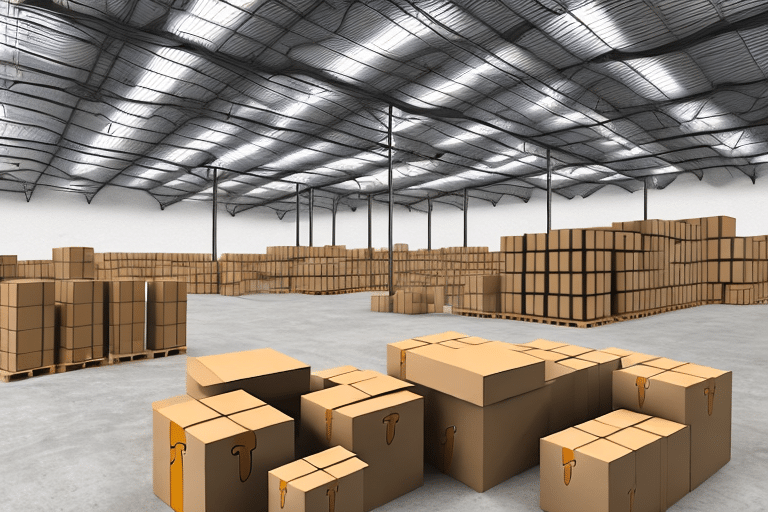Understanding the Costs of Amazon FBA: What You Need to Know
Are you considering using Amazon FBA for your e-commerce business? Understanding the costs associated with this service is crucial for optimizing your operations and maximizing profits. This article delves into Amazon FBA costs, including fulfillment fees, storage fees, referral fees, and more. Additionally, we'll explore factors impacting these costs, strategies for minimizing expenses, and the effect on your profit margins.
What is Amazon FBA?
Amazon FBA, or Fulfillment by Amazon, is a service that enables sellers to store their products in Amazon's warehouses. Amazon then handles the picking, packing, shipping, and customer service for these products. When a customer orders a product from a seller using Amazon FBA, Amazon processes and ships the order promptly.
One of the key benefits of using Amazon FBA is eligibility for Amazon’s Prime shipping program. Products fulfilled by Amazon are accessible to millions of Prime members, offering free two-day shipping, which can significantly boost sales and customer satisfaction.
How Does Amazon FBA Work?
The process of using Amazon FBA involves several steps:
- Sign Up: Register for the Amazon FBA service through your seller account.
- Ship Inventory: Send your products to Amazon's fulfillment centers.
- Storage: Amazon stores your products until they are ordered.
- Order Processing: When a customer orders your product, Amazon picks, packs, and ships it.
- Customer Service: Amazon handles any customer inquiries, returns, and refunds.
Leveraging Amazon’s extensive logistics network ensures fast and reliable delivery to customers, enhancing the overall shopping experience.
Costs of Amazon FBA
While Amazon FBA offers numerous benefits, it's essential to understand the associated costs to maintain profitability. The primary costs include fulfillment fees, storage fees, referral fees, removal fees, and shipping and handling fees.
Fulfillment Fees
Fulfillment fees are charged per unit for picking, packing, and shipping your products. The fees vary based on the size and weight of the item. For example, a standard-sized item weighing less than 1 lb incurs a fulfillment fee of $2.50, whereas an item over 3 lb costs $8.26. (Source: Amazon FBA Fees)
Storage Fees
Storage fees are charged monthly based on the amount of space your inventory occupies in Amazon's warehouses. As of 2023, the standard monthly storage fee is $0.75 per cubic foot from January to September and $2.40 per cubic foot from October to December.
Long-term Storage Fees
Products stored for more than 365 days incur long-term storage fees. Charged twice a year, these fees are $6.90 per cubic foot or $0.15 per unit, whichever is greater. Maintaining a healthy inventory turnover can help avoid these additional costs.
Removal Fees
If you decide to remove unsold inventory from Amazon's warehouses, removal fees apply. The fee is $0.50 per standard-size item and $0.15 per pound for oversize items.
Referral Fees
Referral fees are a percentage of the total sales price, varying by category. For instance, electronics have an 8% referral fee, while jewelry might have a higher percentage. (Source: Amazon Seller Central)
Shipping and Handling Fees
When shipping your products to Amazon's fulfillment centers, you'll incur shipping and handling fees. These costs depend on the carrier, shipping method, and the size and weight of your shipments.
Factors Affecting Amazon FBA Costs
Several factors influence the overall costs associated with Amazon FBA:
- Product Size and Weight: Heavier and larger products incur higher fulfillment and storage fees.
- Category of Product: Different categories have varying referral fee percentages.
- Inventory Turnover: Slow-moving inventory can lead to higher long-term storage fees.
- Shipping Distance: The distance between your location and Amazon’s fulfillment centers affects shipping costs.
Strategies to Minimize Amazon FBA Costs
To optimize your profitability, consider the following strategies to reduce Amazon FBA costs:
Optimize Product Size and Weight
Designing products to be smaller and lighter can significantly reduce fulfillment and storage fees. Consider using lightweight packaging and minimizing product dimensions.
Manage Inventory Levels
Efficient inventory management ensures products do not remain in Amazon's warehouses longer than necessary, avoiding long-term storage fees. Utilize inventory forecasting tools to maintain optimal stock levels.
Negotiate Shipping Rates
Secure better shipping rates by negotiating with carriers or using Amazon’s partnered carrier rates to reduce shipping and handling expenses.
Utilize Amazon’s Fee Rebates
Monitor for any fee rebates or promotions offered by Amazon to recover some of your FBA costs.
Comparing Amazon FBA with Other Fulfillment Options
While Amazon FBA provides comprehensive fulfillment services, it's essential to compare its costs and benefits against other options such as self-fulfillment or third-party logistics (3PL) providers. In some cases, handling fulfillment in-house or using a 3PL may offer cost savings, especially for businesses with high-volume or specialized logistics needs. Carefully evaluate the total costs, including time, resources, and scalability, to determine the best fit for your e-commerce business.
Common Mistakes to Avoid with Amazon FBA
Avoid these common pitfalls to ensure effective use of Amazon FBA:
- Underestimating Fees: Failing to account for all FBA fees can erode profit margins.
- Poor Inventory Management: Overstocking can lead to high storage fees, while understocking can result in lost sales.
- Ignoring Packaging Requirements: Non-compliance with Amazon's packaging standards can lead to additional fees or damaged inventory.
- Lack of Pricing Strategy: Not factoring in all costs when setting prices can make your products uncompetitive or unprofitable.
Impact of Amazon FBA Costs on Profit Margins
Amazon FBA costs directly influence your profit margins. High fulfillment and storage fees can reduce your overall profitability, especially for low-margin products. It's crucial to perform a detailed cost analysis and ensure that your pricing strategy accounts for all FBA expenses. Regularly reviewing and adjusting your strategy in response to changing fees and business volume can help maintain healthy profit margins.
Budgeting for Amazon FBA Costs
Effective budgeting for Amazon FBA involves forecasting all potential expenses and incorporating them into your financial planning. Consider the following steps:
- Calculate Fixed and Variable Fees: Understand all FBA fees and how they apply to your products.
- Forecast Sales Volume: Estimate your sales to predict storage and fulfillment needs.
- Plan for Seasonality: Anticipate peak seasons and adjust inventory levels to manage storage fees.
- Monitor and Adjust: Continuously track your FBA costs and adjust your budget as necessary to stay profitable.
Conclusion: Is Amazon FBA Worth It?
Amazon FBA offers significant advantages, including streamlined logistics, access to Amazon’s vast customer base, and eligibility for Prime shipping. However, the associated costs can impact your profitability if not carefully managed. By understanding the various fees, strategizing to minimize costs, and comparing FBA with other fulfillment options, you can determine if Amazon FBA aligns with your business goals and contributes positively to your bottom line.




















